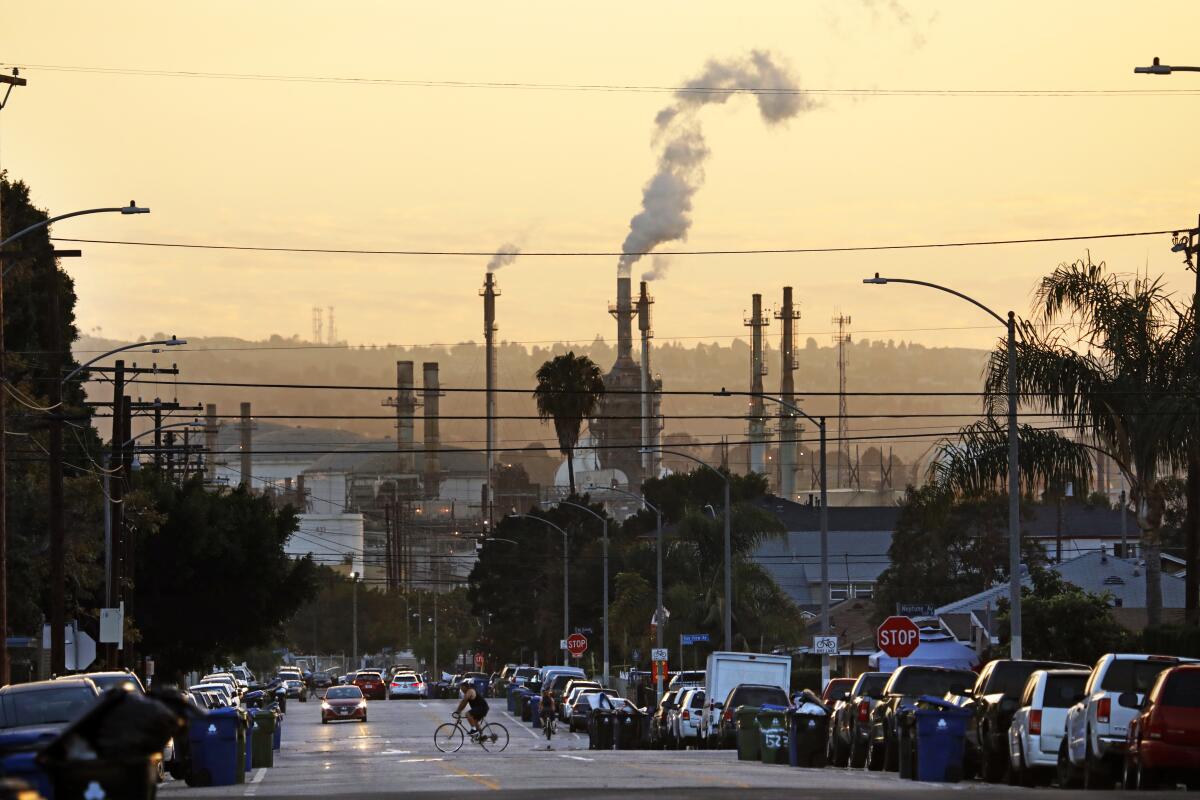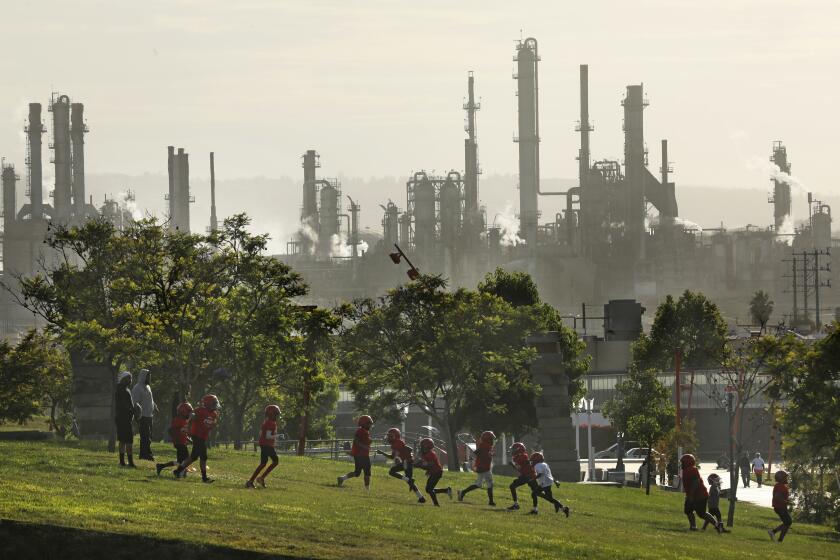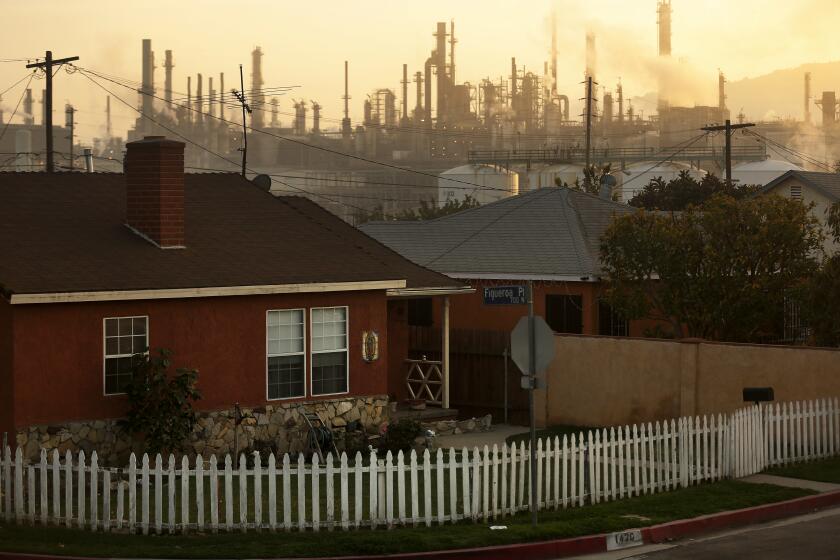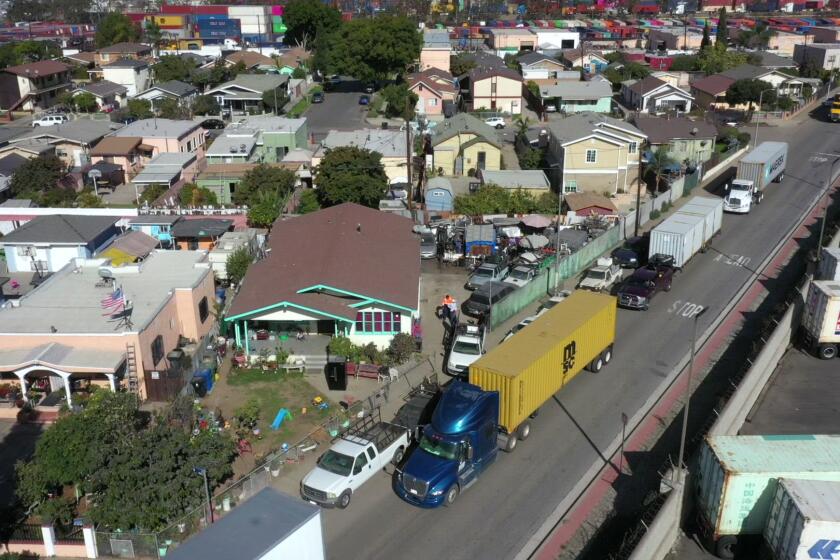Op-Ed: How can the White House fix environmental injustice if it won’t take race into account?

- Share via
In mid-February, when the White House unveiled the beta version of its Climate and Economic Justice Screening Tool, it was met by sharp criticism from environmental justice advocates: A mapping tool designed to identify disadvantaged communities neglected to use race as a criterion.
The screening tool, when finalized, will govern President Biden’s Justice40 initiative, which requires that at least 40% of federal investments in climate-change mitigation and clean energy benefit neighborhoods and communities that are, in the administration’s words, “marginalized, underserved and overburdened by pollution.”
Working at the census tract level, the Justice40 screener sets vulnerability thresholds in eight categories. In general, if a community scores above an economic and environmental threshold in one or more category, it will be prioritized for federal aid.
But race never factors in the tool’s calculus, an omission that runs counter to science. It turns out that the No. 1 predictor of whether you live perilously close to a polluting facility is race. Income is important, but it is generally the second-best indicator. For example, moderate-income Black neighborhoods are often more exposed to hazards than low-income white neighborhoods.
Southern California regulators should adopt new rules to slash pollution from oil refineries that for years have been allowed to avoid cleaning up.
The Justice40 screening tool would be undeniably more accurate if race were considered. Yet it’s a solid start, and California’s experience shows how to use and improve it.
First, why did the Biden administration sidestep race?
An official from the White House Council on Environmental Quality addressed this directly: “We have a desire to make sure this tool is legally enduring,” he explained to reporters. Using race as a criterion for distributing federal funds could leave the tool — and the Justice40 effort — open to challenge on constitutional grounds.
California, of course, has seen this movie before. In 2013, the state released its own initial environmental justice screening tool, now considered to be first-in-class among such efforts. Like the Justice40 tool, CalEnviroScreen does not explicitly include race among its indicators. The 1996 passage of Proposition 209, an anti-affirmative action measure, made considering race a legal no-go for the state, whether for determining college admissions or targeting climate investments.
A draft regulation from the Newsom administration is a good idea. Here’s how to make it a great one.
Nonetheless, California’s climate investments program has been largely successful at targeting communities most affected by redlining and other racist practices that have concentrated hazards in some neighborhoods and amenities in others. According to a state analysis released in October, the median CalEnviroScreen priority scores for Black and Latino Californians are twice that of white residents.
The state screening tool arrives at its scores based on proxy measures such as proximity to hazardous sites and levels of pollution in the air and differences in babies’ birth weights and in rates of heart disease and asthma, along with demographic information, including income level, housing costs and “linguistic isolation.”
The result: California has spent more than $4.5 billion on environmental justice projects — affordable housing near transit, tree planting, expanded transit service, renewable energy initiatives — in priority communities that are overwhelmingly populated by residents of color.
Residents of Drumm Avenue in Wilmington say truck traffic from the Port of Los Angeles makes them miserable.
The Biden administration closely modeled the Justice40 screening tool on California’s approach. It takes into account similar factors that identify communities of color, but its thresholds can be too restrictive.
For example, the climate website Grist analyzed how the national tool would treat a particular census tract — 6603 — in San Bernardino County. The tool scores that neighborhood — which 2020 census data show is 92% people of color — above the 90th percentile for exposures to fine particulate matter and diesel pollution. However, its income level, although low, is too high to make the cut for Justice40 funding. A neighboring tract, with essentially the same extreme exposures but a slightly lower income level would qualify. Both communities breathe the same bad air, but only one would get federal help.
This kind of near-miss is baked into any screening tool. But California’s tool seems to work better — the scores of the two tracts are similar. Moreover, when California recognized such inequities in CalEnviroScreen, it added a rule to its climate investment program: A portion of state funding must go not only to the community flagged by the screening tool, but also to low-income neighborhoods within a half-mile radius.
And here’s another challenge California has tackled: A screening tool, no matter its criteria or rules, can only identify where aid should go. It can’t eliminate the systemic barriers that may prevent the neighborhoods most in need from benefiting from that aid. To do that requires empowering local governments and communities so that they can design effective programs, successfully apply for the available grants and hold the system accountable.
California’s solution has been direct state investment in “capacity building” programs to help priority communities make use of the environmental justice funds that are available.
The chemical train didn’t come this morning.
The national Climate and Economic Justice Screening Tool is still being developed. The tool — and Justice40 — can and should be strengthened. And to answer the concerns of the environmental justice advocates, it should do what California did: Make a side-by-side comparison of the communities the tool designates as disadvantaged with data that does include race and ethnicity.
Race matters. A lot. And we cannot shy away from it if we want real, transformative change. But with the stakes so high, we can make the arguments about racial equity and continue to press forward for successful implementation of Justice40, to make real the promise of climate justice.
Alvaro Sanchez is vice president of policy at the Greenlining Institute in Oakland. Manuel Pastor is a professor of sociology and director of the Equity Research Institute at USC.
More to Read
A cure for the common opinion
Get thought-provoking perspectives with our weekly newsletter.
You may occasionally receive promotional content from the Los Angeles Times.














